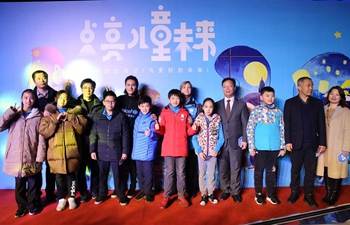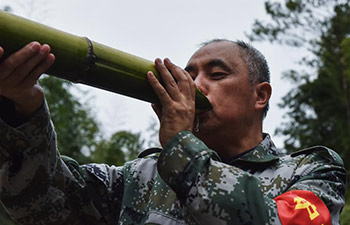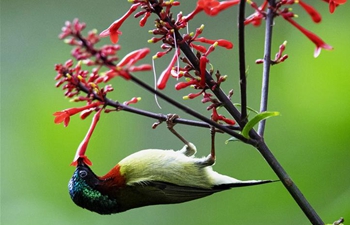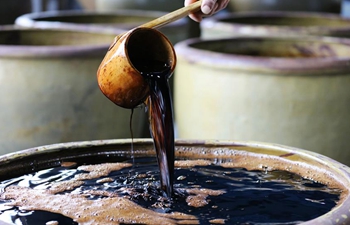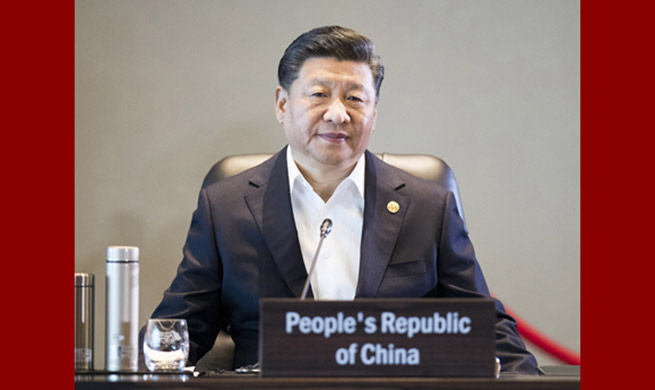ZHENGZHOU, Nov. 21 (Xinhua) -- What can a Chinese farmer do with oracle bone script? Tian Fusheng, 63, has the answer, as he has centered his life on them.
Tian sells cultural products, all related to oracle bone script and Yin-Shang culture at his shop located in the Yin Ruins tourist site.
Tian was born in Xiaotun Village in the city of Anyang, central China's Henan Province. As a discovery site of oracle bones and script, Yinxu, or the Yin Ruins in Anyang, boasts archaeological remnants of the ancient city of Yin, the last capital of the Shang Dynasty (1600 BC-1046 BC).
"Oracle bone script dating back 3,000 years ago is a great treasure left by our ancestors. We must learn about it," he said.
Oracle bones are pieces of ox scapula or turtle plastron, which were used for divination during the late Shang Dynasty. They bear the earliest significant corpus of ancient Chinese writing and contain important historical information about the Shang.
Tian learns about oracle bone script himself by reading books, and he is now able to recognize many of the ancient characters.
"But studying or reading oracle bone script alone is sometimes boring, so I have found a way to make it both interesting and meaningful," he said.
He has combined the Chinese surname culture with oracle bone script by creating fans, name plaques and flags with different Chinese surnames written in oracle bone.
"I have special feelings about Yin-Shang culture as I'm the third generation in my family to link with it. My grandfather was among those who excavated oracle bones," he said. "I hope more people can be interested in it."
A soldier at a young age, Tian retired, came back to the village and took the lead to contract land to plant grain and cotton under the household contract responsibility system in the early 1980s.
In 2001, however, all the factories were ordered to shut down and no one was allowed to plow land in the village as an application for world heritage was launched that year to protect the Yin Ruins.
"We were not able to earn money from the land. Young people went to big cities, leaving the elders and children at home," Tian recalled. "However, Yin-Shang culture gave us a second chance."
Since the Yin Ruins were added to the UNESCO world cultural heritage list in 2006, dozens of villagers raised over 200,000 yuan (about 28,788 U.S. dollars) to establish an art troupe and gave performances related to Yin-Shang culture under the guidance of experts and scholars.
As leader of the art troupe, Tian said that they wanted to present scenes such as making bronze ware 3,000 years ago using well-tailored costumes and vivid performances.
However, the art troupe was forced to close due to the lack of demand.
With this year marking the 90th anniversary of the excavation, a consensus on the Yin Ruins development was released last month, calling on efforts to explore the connotation of cultural relics unearthed in the Yin Ruins, make new cultural and creative products and develop related industries.
"I still have the costumes and props. I believe our art troupe will come back someday and we will be able to better show the Yin-Shang culture to tourists at that time," he said.




